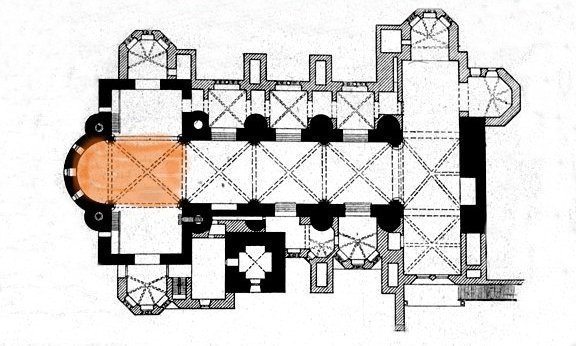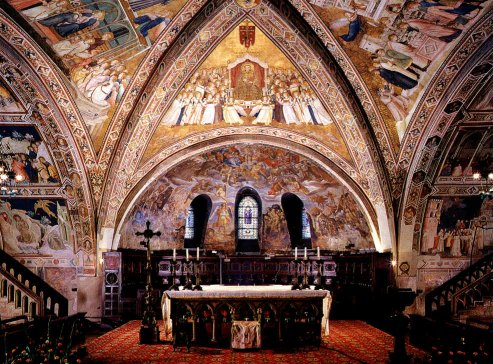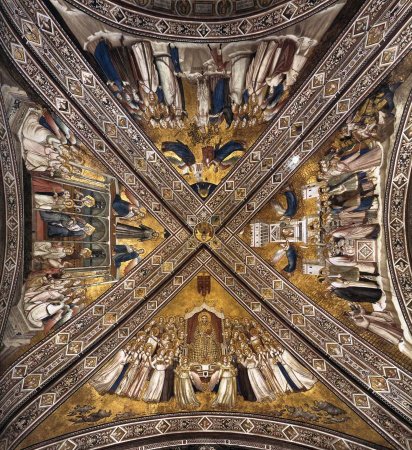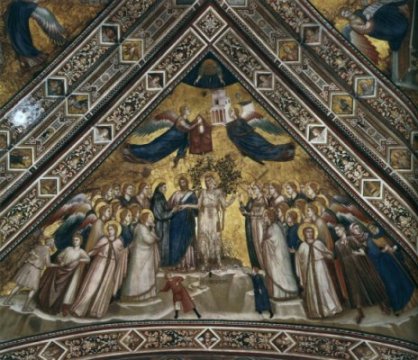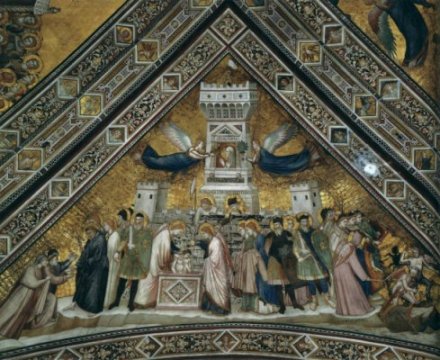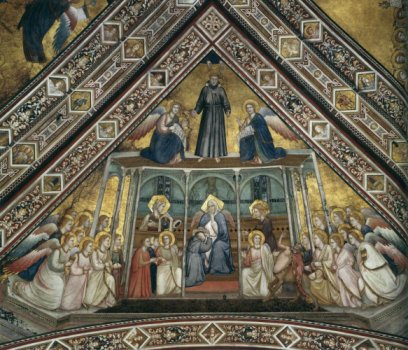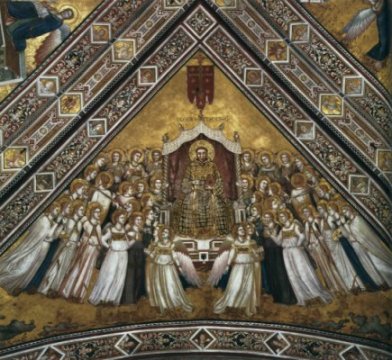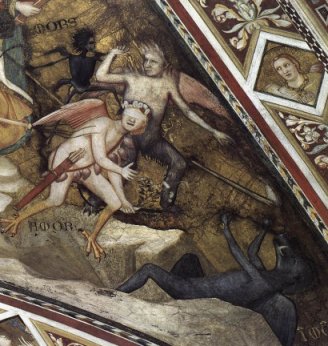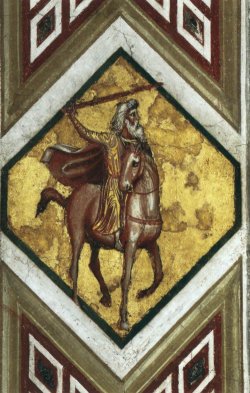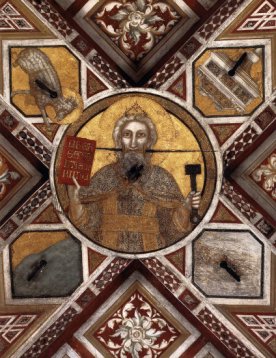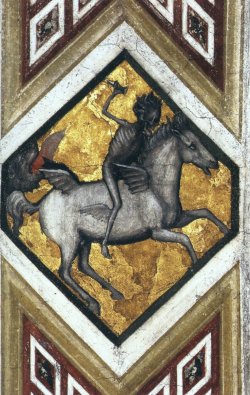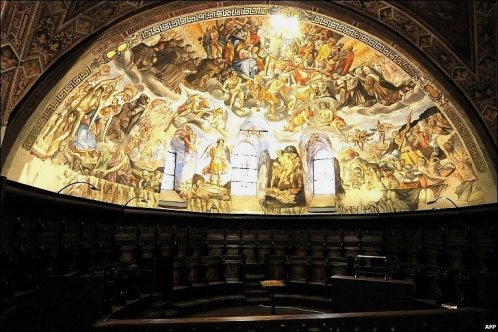|
San Francesco, Assisi - Lower Church |
|||
|
Presbytery and Apse |
|||
|
|
|||
|
|
|||
| The vault frescoes, attributed to Giotto, are allegories of the three main principles of Franciscanism: poverty, chastity and obedience. The fourth fresco, which faces the nave, shows St Franics in Glory, Glorios Francisc. These images are, theologically speaking, perhaps the most interesting (and argued about) of all the lower church frescos. Let's look at the content before moving on. The Allegory of Poverty shows a poverty-stricken woman dressed in rags. Children are throwing stones at her. Christ is officiating at the marriage of St Francis to this symbol of poverty. Angels are carrying away those tempting worldly goods. On the left, a young man is removing his clothes in imitation of St Francis. on the right, some well-to-do young men are sneering. The Allegory of Obedience
is set in the chapter house of a friary. The central figure is
obedience; on either side are Prudence (left) and Humility (right). Note
that Prudence has two heads; she can see both the past and the
future. Obedience, while indicating silence, is placing a
yoke over the head of a monk. Above this figure, disembodied hands place
another yoke over the head of St Francis. |
|||
|
|
|||
|
|
|
||
|
|
|
||
|
|
|||
| So
far, all seems clear: the frescoes illustrate moral lessons on how to be
a good Franciscan. But there is much more to them than that. If we look
more closely at the small images to the side of the four frescoes and in
the central boss, we can begin to see what is going on here. Look
at the image of Christ and then read Revelation: His head and his hairs were white like wool, as white as snow; and his eyes were as a flame of fire; And his feet like unto fine brass, as if they burned in a furnace; and his voice as the sound of many waters. And he had in his right hand seven stars: and out of his mouth went a sharp two edged sword: and his countenance was as the sun shineth in his strength. Revelation 1 v 14 – 16. |
|||
|
|
|
|
|
| Relating these images of the Apocalypse to St. Francis reflects the writings of Saint Bonaventura, amongst others. In his Life of St Francis Bonaventura had already pointed to the connection between the stigmatisation of Francis and the Crucifixion of Christ. But he went much further. He was not the only theologian to suggest was that, while Christ's death lead to the prospect of a second creation, St Francis could be identified with the sixth angel of the apocalypse, saving the world and signalling the dawn of humanity's third age. And I saw another angel ascending from the east, having the seal of the living God: and he cried with a loud voice to the four angels, to whom it was given to hurt the earth and the sea, Saying, Hurt not the earth, neither the sea, nor the trees, till we have sealed the servants of our God in their foreheads. Revelation 7 v 2 - 3 What, one wonders, would that humble man from Assisi have made of this? |
|||
| Apse fresco. The Last Judgement fresco shown below was painted by Cesare Sermei in 1623. Sermei is regarded as somewhat uninspired; one guide book sums up this painting in one word - gloomy. (Mind you, isn't that what Last Judgements are meant to be? Only if you are on the wrong side, of course.) This criticism may have been made before the recent restoration, which has removed the gloominess. What art historians most regret is the disappearance of what was there before Sermei got to work on it, particularly as it is described in some detail by Vasari and others. It was, apparently, another allegorical painting, this time concerning the stigmatisation of St. Francis. |
|||
|
|
|||
|
|
|||
